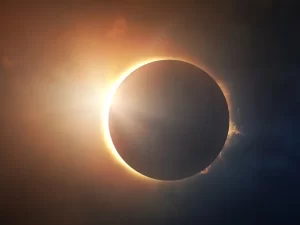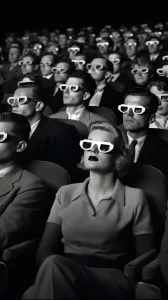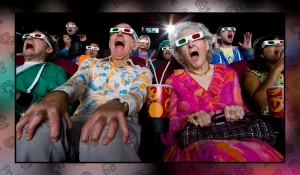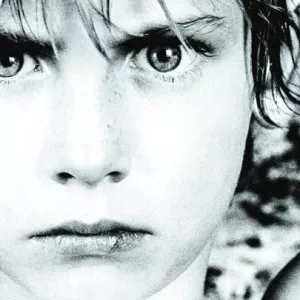WELCOMING SPRING – I NEVER PROMISED YOU A ROSE GARDEN

After some nagging resistance, spring has finally come to the Northeastern US. And with that comes a sense of renewal and joy. We feel the freedom of stepping out of our clunky winter garb. We scurry like birds building nests to clean our homes, shop online, fill the fridge with healthy options and renew our gym memberships working toward that illusive beach body. And for moments we are aligned with all that is possible and good.
But, I beg your pardon, but there is also the dread provoked by that change. Along with the roses, there is a little rain sometimes. This post is about stepping back, creating space, and accepting the entirety of our experience. “Good, bad, happy, sad” the poem goes. “all things vanish like the imprint of a bird in the sky.” The very things that excite my brain about spring also terrify me. The flower’s bloom is spectacular when we have the space to notice. Perception is a cosmic blessing in a singular moment. Yet, the flower is the result of the immense struggle as it made its way through the earth. Does the seed dream of the flower to be while it is busy fighting through the darkness? And when it does finally bloom, it opens and connects to the world around it for a brief and glorious moment. And then, before long gone. Yet, in its brief tenure, its beauty is its practical connection to the world. Bees are attracted to the flower, bears, and humans use flowers in their springtime mating rituals. We are part of a connection to life. And we are blessed by the flower in the perfect moment of our noticing. And yet, we go on to immediately worry about the next thing more important than our life, and the flower will remain and eventually wilt and die behind us. What does the flower know of its coming death? The law of Karma is not the cycle of reward and punishment that we imagine. Karma is the dynamic interplay of cause and condition within a vast and interconnected web of reality. While it is impossible to fully grasp its totality, we can nonetheless step back a bit and see things from a wider perspective. The beauty of spring also heralds the coming winter. All of life returns to darkness. Along the way, we have the opportunity to pause and see the world around us, of which, we are only a small part.

 A moment of perception is divine. Its a connection to the beauty and the possibility of life. And yet, it passes and leads us back inevitably to the struggling darkness. Maybe we can pick the flowers so the moment will last? Or take pictures? Or post the pictures so everyone will share the moment with us? We can post pictures of ourselves with the flowers to prove something to ourselves and everyone else. Yet, the moment is gone before we snap the camera. All flowers will die alone. And yet, they are not alone in that. There is a saying that we are not unique, therefore we are never alone. The flowers will die and we will too. Like everything else. And this is what connects us to the grander cycle of our planet. This moment of renewal continues whether we are here to see it, sell it or keep it. We can try and document the moment, but picking the flowers only makes them die more quickly. Trungpa Rinpoche used the analogy of a flower in the forest to illustrate mindfulness and awareness as two foundational components of meditation. MIndfulness, he said, was seeing the flower. Awareness was seeing the space around the flower and deciding whether to pick the flower or not. When we recognize the flower, our mind pauses just enough to connect to a world beyond the circular discursive thinking behind which we generally hide. We are making contact. The flower is doing its job. Awareness is the space around the flower that allows us to see its beauty and our relationship to it. When we don’t have space for mindfulness we might trample over the flower in our haste. If we don’t develop awareness in our practice and our life, then we might trample all over our preption by trying to cling to the moment for our own aggrandizement. The flower will die. We will die. And, in both cases, the cycle will continue. So each time we notice the flower, we are glimpsing something larger, if we allow the space to see that.
A moment of perception is divine. Its a connection to the beauty and the possibility of life. And yet, it passes and leads us back inevitably to the struggling darkness. Maybe we can pick the flowers so the moment will last? Or take pictures? Or post the pictures so everyone will share the moment with us? We can post pictures of ourselves with the flowers to prove something to ourselves and everyone else. Yet, the moment is gone before we snap the camera. All flowers will die alone. And yet, they are not alone in that. There is a saying that we are not unique, therefore we are never alone. The flowers will die and we will too. Like everything else. And this is what connects us to the grander cycle of our planet. This moment of renewal continues whether we are here to see it, sell it or keep it. We can try and document the moment, but picking the flowers only makes them die more quickly. Trungpa Rinpoche used the analogy of a flower in the forest to illustrate mindfulness and awareness as two foundational components of meditation. MIndfulness, he said, was seeing the flower. Awareness was seeing the space around the flower and deciding whether to pick the flower or not. When we recognize the flower, our mind pauses just enough to connect to a world beyond the circular discursive thinking behind which we generally hide. We are making contact. The flower is doing its job. Awareness is the space around the flower that allows us to see its beauty and our relationship to it. When we don’t have space for mindfulness we might trample over the flower in our haste. If we don’t develop awareness in our practice and our life, then we might trample all over our preption by trying to cling to the moment for our own aggrandizement. The flower will die. We will die. And, in both cases, the cycle will continue. So each time we notice the flower, we are glimpsing something larger, if we allow the space to see that.
Each moment of perception can connect us to the larger space. And when we are aware of that moment, we are invited to open to the space of life around us. We grow on our journey, one perception at a time until we turn our mind from clinging toward openness. Our reluctance to just let the flower be, or allow the moment to be, or each other be, or ourselves be, is because the moment will end. Sunlight will devolve into darkness. And we will again dissolve back to the eternal. This is so frightening to us. It’s important that we make something of ourselves. Maybe we can erect statues of ourselves and the flowers we have seen. But ensuing generations may be offended and tear the statues down. Maybe we can make statues out of sand, as the Tibetan monks do with their mandalas. They make these intricate and elaborate works of temporary art that are swept away at the end of the ceremony. In this way, the monks are pointing to something more eternal than ephemeral human statements. But, we are so frightened to let go. This causes great pain as it is not the way of our world. On our planet all things come and all things go. And to stand apart is to create friction with the movement of time and space. And so we suffer. We refuse to let go and we suffer.
Then we see a flower again. And we have an opportunity to be one with the planet. Not something more important and standing alone, but someone less important that is nonetheless part of everything.



 In meditation theory, the sun is used as a depiction of awareness. The sun shines on everything equally regardless of whether it is blocked by the moon, the clouds or the turning earth. Awareness is alive and awake in the universe whether or not we are conscious of it. It is the work of the meditator to uncover the veils of self-imposed obscuration that block access to awareness. We notice thoughts that are actually quite small in the scheme, and bring our attention back to the space afforded by the breath. As we do this, we are stepping back from the thought and revealing a larger context. Our blockage might appear less significant, even humorous. Over time, these obscurations become less solid and less imbued with “meaning”. They become right-sized. Sometimes they disappear altogether. Although the significant obscurations require less force, but more patience. Some will likely return. When that happens we are faced with the same task. Notice them as thinking, and return to the breath. This reconnects us to space, which is perspective. It sucks that we often have to be fooled again and again but that is the work of creating access to awareness. That sunlight will, in time, permeate our experience, but there is a lot of slogging to get there.
In meditation theory, the sun is used as a depiction of awareness. The sun shines on everything equally regardless of whether it is blocked by the moon, the clouds or the turning earth. Awareness is alive and awake in the universe whether or not we are conscious of it. It is the work of the meditator to uncover the veils of self-imposed obscuration that block access to awareness. We notice thoughts that are actually quite small in the scheme, and bring our attention back to the space afforded by the breath. As we do this, we are stepping back from the thought and revealing a larger context. Our blockage might appear less significant, even humorous. Over time, these obscurations become less solid and less imbued with “meaning”. They become right-sized. Sometimes they disappear altogether. Although the significant obscurations require less force, but more patience. Some will likely return. When that happens we are faced with the same task. Notice them as thinking, and return to the breath. This reconnects us to space, which is perspective. It sucks that we often have to be fooled again and again but that is the work of creating access to awareness. That sunlight will, in time, permeate our experience, but there is a lot of slogging to get there.

 I tend to live life from one project to the next, believing that -despite all prior experience- this time I will get it right. This diet, this financial plan, this meditation, this love. Especially this love. True Love. That’s the one that gets me. Each love I fall into becomes my center of being. I have always failed to see that my relationship to loving has all the hallmarks of classic addiction. In his masterwork, The Art of Loving, psychologist Erich Fromm defined “true love” as two people who were both ready for the same thing at the same time. He specifically nudged the reader away from the idea that we were part of something special. But, despite the slight-of-hand of hormonal urges, true love is not destiny. True love, like life itself, is a random occurrence that happened to succeed. Life is opportunistic. Einstein famously said, “God doesn’t play dice with the universe”. It seems, even a thinker as profoundly creative as Albert still searched for the occasional guarantee. If the universe doesn’t play dice it may be because dice only has 36 outcomes. The perplexing game of Go that has kept humans intrigued for 4,000 years, has less than 11,000 possible outcomes. If the universe is playing with us, It is using a much more vast and complex system than any game our brains can presently conjure. And, yet, within that ocean of possibility, we find that apple trees always breed apple trees. This interesting paradox is central to our existential being. Life is random and there are repetitive patterns throughout.
I tend to live life from one project to the next, believing that -despite all prior experience- this time I will get it right. This diet, this financial plan, this meditation, this love. Especially this love. True Love. That’s the one that gets me. Each love I fall into becomes my center of being. I have always failed to see that my relationship to loving has all the hallmarks of classic addiction. In his masterwork, The Art of Loving, psychologist Erich Fromm defined “true love” as two people who were both ready for the same thing at the same time. He specifically nudged the reader away from the idea that we were part of something special. But, despite the slight-of-hand of hormonal urges, true love is not destiny. True love, like life itself, is a random occurrence that happened to succeed. Life is opportunistic. Einstein famously said, “God doesn’t play dice with the universe”. It seems, even a thinker as profoundly creative as Albert still searched for the occasional guarantee. If the universe doesn’t play dice it may be because dice only has 36 outcomes. The perplexing game of Go that has kept humans intrigued for 4,000 years, has less than 11,000 possible outcomes. If the universe is playing with us, It is using a much more vast and complex system than any game our brains can presently conjure. And, yet, within that ocean of possibility, we find that apple trees always breed apple trees. This interesting paradox is central to our existential being. Life is random and there are repetitive patterns throughout. When emotions run high, the fear mind takes over and latches onto simple answers. And naturally, we believe we are right. This feeling of righteousness wants retribution and dismisses the inclusion of societal and familial issues as pandering snowflakery. The Buddha spoke of Karma as the law of cause and effect. He also spoke of the interdependence of every event to all else. Despite conditioned tendencies toward black and white binaries, the Buddha saw that the causes of any event are myriad and nuanced. This would seem frustrating to the raging defensive mind latching onto rightandwrong. But a reactive mind is generally devoid of nuance or compassion. Compassion doesn’t mean kindness to those who’ve caused harm. It means understanding those who cause harm.
When emotions run high, the fear mind takes over and latches onto simple answers. And naturally, we believe we are right. This feeling of righteousness wants retribution and dismisses the inclusion of societal and familial issues as pandering snowflakery. The Buddha spoke of Karma as the law of cause and effect. He also spoke of the interdependence of every event to all else. Despite conditioned tendencies toward black and white binaries, the Buddha saw that the causes of any event are myriad and nuanced. This would seem frustrating to the raging defensive mind latching onto rightandwrong. But a reactive mind is generally devoid of nuance or compassion. Compassion doesn’t mean kindness to those who’ve caused harm. It means understanding those who cause harm.

 Pema Chodron once said, the Buddha was someone who walked out the door, and just kept walking. HIs life stands as a testament of liberation from economic, spiritual or emotional encumberments. Many people interpret this to mean that attachments are bad, and that we should let go of everything at all cost. But while renunciation is the foot of meditation, once we have loosened our grip on things, the path to liberation continues back to service to our world. What about our families, friends and communities? And what of the Buddha’s own family? Were they actually smiling
Pema Chodron once said, the Buddha was someone who walked out the door, and just kept walking. HIs life stands as a testament of liberation from economic, spiritual or emotional encumberments. Many people interpret this to mean that attachments are bad, and that we should let go of everything at all cost. But while renunciation is the foot of meditation, once we have loosened our grip on things, the path to liberation continues back to service to our world. What about our families, friends and communities? And what of the Buddha’s own family? Were they actually smiling But it is important to remember the doctrine of Basic Goodness. If we are able to see the goodness in anything, we can develop the ability to understand it. Attachment is the same energy, in essence, as mindfulness. The word for mindfulness
But it is important to remember the doctrine of Basic Goodness. If we are able to see the goodness in anything, we can develop the ability to understand it. Attachment is the same energy, in essence, as mindfulness. The word for mindfulness 
 We have funny glasses and lipstick stains and a raging headache. Even I, who have been clean and sober for several years, are working off a sugar and carb rush from gorging on bad food. Why? To prove I’m happy. Sometimes my life feels like a series of emotional selfies trying to convince myself of something. And so we begin the new year already buried in the past. We have grand resolutions, so inspiring today that we’ll maybe forget them in a week. In my drinking days, I would crumble the life around me, just to see myself build it back. I had a friend who told me I was simultaneously anal expulsive and anal retentive. Clean it up and tear it down. Clean it up and tear it down. And part of this crazy cycle were the outsized resolutions I would make. Inspirations that became obligations, forgotten soon enough that would be resurrected next year. We all wish for world peace.
We have funny glasses and lipstick stains and a raging headache. Even I, who have been clean and sober for several years, are working off a sugar and carb rush from gorging on bad food. Why? To prove I’m happy. Sometimes my life feels like a series of emotional selfies trying to convince myself of something. And so we begin the new year already buried in the past. We have grand resolutions, so inspiring today that we’ll maybe forget them in a week. In my drinking days, I would crumble the life around me, just to see myself build it back. I had a friend who told me I was simultaneously anal expulsive and anal retentive. Clean it up and tear it down. Clean it up and tear it down. And part of this crazy cycle were the outsized resolutions I would make. Inspirations that became obligations, forgotten soon enough that would be resurrected next year. We all wish for world peace. these experiences are very ordinary. Maybe we have glimpses of the truth beyond truth all the time. But maybe we fail to recognize these opening into the profound as we scurry from place to place to place. Our earth evolved uniquely to host conscious life, so it is quite rare and precious. It is our home and the incubator that gave birth to a consciousness that can glimpse itself and the possibility beyond itself. Perhaps, it is through human eyes that the universe sees itself. Perhaps by seeing ourselves, we can see the universe.
these experiences are very ordinary. Maybe we have glimpses of the truth beyond truth all the time. But maybe we fail to recognize these opening into the profound as we scurry from place to place to place. Our earth evolved uniquely to host conscious life, so it is quite rare and precious. It is our home and the incubator that gave birth to a consciousness that can glimpse itself and the possibility beyond itself. Perhaps, it is through human eyes that the universe sees itself. Perhaps by seeing ourselves, we can see the universe.


 attachment is not our fault. However, it is an opportunity to learn to let go. Learning to let go is a tool we can use often in our life and practice. Whenever we are stuck in a thought or feeling an emotion we can’t be rid of, we actually can just stop. We can pause. Once we’ve allowed a gap we might be able to step back and recognize that this experience is not about the object of our pain. It is about the action of gripping. I am holding on. The all-important next step is acceptance.
attachment is not our fault. However, it is an opportunity to learn to let go. Learning to let go is a tool we can use often in our life and practice. Whenever we are stuck in a thought or feeling an emotion we can’t be rid of, we actually can just stop. We can pause. Once we’ve allowed a gap we might be able to step back and recognize that this experience is not about the object of our pain. It is about the action of gripping. I am holding on. The all-important next step is acceptance. away we can release our grp with (self)love. Like Banksy’s image of letting go of a heart balloon. We simply open our heart and our mind and offer our anger, disappointment or insult into space. Our emotions are not
away we can release our grp with (self)love. Like Banksy’s image of letting go of a heart balloon. We simply open our heart and our mind and offer our anger, disappointment or insult into space. Our emotions are not